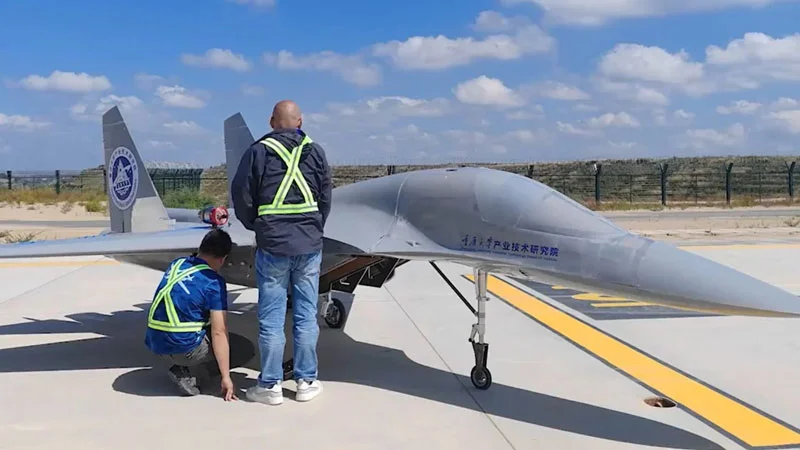China has moved from bench testing of rotary detonation engines to testing them on flying prototypes. This would allow the creation of a wide variety of hypersonic aircraft, from planes to rockets, while also consuming less fuel.
By publication South China Morning PostThe FB-1 Rotary Detonation Engine (FB-1 RDE) was jointly developed by the Industrial Technology Research Institute of Chongqing University and the Thrust-to-Weight Ratio Engine (TWR), a private company based in Shenzhen. The 5-meter-long unmanned aerial vehicle was tested at an unnamed airport in Gansu province.
A photo of a burning engine while driving the drone down the lane is being shared on local social networks. It is unclear whether the FB-1 RDE engine has been flight tested. But the creation of a prototype engine installed in a flying vehicle is a real event. Until now, only bench tests in extremely voluminous environments were known.
Russia reported testing pulse-detonation rocket engines as early as 2016. China began testing detonation engines about five years ago, and the United States had some success testing similar engines earlier this year. In such a short time, China managed to make many surprises by starting to experiment with the detonation engine on coal. More precisely, on a mixture of coal dust and ethylene. He surprised even now by being the first to announce the start of flight tests of an aircraft with a detonation engine on board.
Fuel in a detonation engine is supplied continuously or in portions. For example, Russian institutes talked about creating pulse-detonation rocket engines. In the United States and China, they are working on rotary detonation engines, which are suitable for continuous fuel supply, and their explosion creates an annular and twisted tornado-like detonation wave, the front of which begins to spread in the engine. a speed that greatly exceeds the speed of the gases produced by the combustion of engine fuel.
According to experts, detonation engines will be able to save up to 30 percent on fuel while developing hypersonic speeds. Another important advantage is thought to be the ability to flexibly control thrust from zero to maximum, which is not a strong point of jet engines. Finally, rotary detonation engines promise to be easier to operate and maintain.
“This event was an important step in the implementation of TWR’s comprehensive strategy for the development of detonation engine technologies and flights using detonation engines”, – TWR reported on WeChat.
Earlier this year, TWR reported that its rotary engine had achieved 1,000 N thrust and that the engine should be in production within two years. Roughly speaking, this is a thrust of 100 kg, which does not allow us to talk about any heavy aircraft, but for drones it will be enough.














